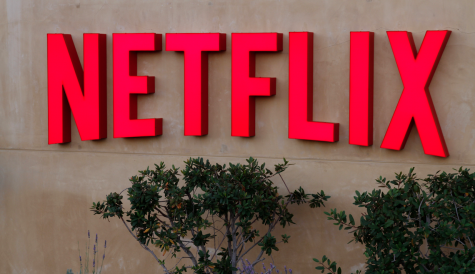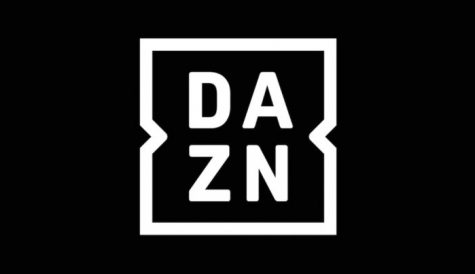Subs up: Sinclair, Disney and the direct-to-consumer world
The inexorable rise of subscription video-on-demand and the concomitant decline of advertising-based broadcasting is a well-established – and sometimes hotly contested – trend in the media distribution world.

Drew Marcus (centre) and Steve Pruett (right) at the NAB Show
The impact of streaming services on traditional video consumption patterns has been most strongly felt in the US. While over-the-air TV has seen uplift from cord-cutting – as Millennials combine streaming services with good old free TV rather than pay huge cable bills – the bigger story is that changing viewing habits are hitting traditional media.
Broadcasters are not standing still. At the NAB Show this week, Steve Pruett, EVP and chief TV development officer at US local broadcast giant Sinclair said that his group could look to develop its own virtual MVPD platform and ultimately develop a wider SVOD offering to counter emerging challenges to over-the-air broadcasting.
Sinclair, which has been building a national platform from which to launch new services, already offers a subscription service around The Tennis Channel. However, the rise of streaming outfits such as DISH Networks’ Sling TV has given traditional players such as Sinclair an outline of how the ‘skinny bundle’ model could be shaped to serve broadcasters’ interests.
Speaking alongside Pruett, Drew Marcus, senior advisor at Guggenheim Securities, provided the context: he said that TV station stocks in the US were down 21% this year so far. Entertainment stocks in general were flat, he said. However, broadcast stations were only trading at only 5.7 times free cash-flow, indicating that public markets are concerned about their future.
Subscriptions and direct-to-consumer plays are of course more complex than advertising-supported TV because they involve a direct relationship with consumers who will blame the broadcaster if something they are paying for isn’t working properly or if a cancellation of the service isn’t properly processed.
Pay TV broadcasters already know about the subscription model, but those with sufficient scale are diversifying into low-cost direct-to-consumer offerings, meaning they too need to manage a direct relationship. Disney this week took the plunge with its launch of ESPN+, its new OTT TV service launched alongside a new version of the ESPN app.
ESPN has of course invested heavily in the technology platform necessary to support its digital offerings through its investment in BAMTech. Other would-be OTT TV entrants among players that traditionally have focused either on advertising, or on selling channels to affiliates, may find the direct relationship more challenging.
They are also pitching their tents in the OTT camp at a time when growth in penetration of SVOD is slowing down. Also this week, Ampere Analysis published research that showed no overall penetration increase of SVOD in the US for four consecutive quarters.
The Ampere research did however find that there is still opportunity for growth through ‘service stacking’ – the accumulation of multiple, relatively low-cost subscriptions by individual households – as well as room for growth in international markets beyond the US.
According to Ampere, the number of subscriptions per SVOD home the US stands at 2.79, much higher than the nearest European rival Sweden.
While even that US number still leaves room for growth, winning a place on a household’s subscription list will prove more challenging the greater the number of services there is to choose from. Netflix and a handful of other services have the marketing power to be perceived as ‘must-have’ offerings, but services with more marginal appeal are likely to struggle, even if the price point is relatively low. The pay-back threshold could of course be lowered if broadcasters outsource the technical and subscriber management aspects of direct-to-consumer, but they still need to license content in a window that makes sense, or make their own content and potentially forego revenues from selling it on to third-party licensees.
It’s also worth remembering that while one of the big merits of traditional pay TV was that it delivered predictable cash-flow through recurring subscription revenue, that ‘recurring’ part is a whole lot less certain in the OTT TV world. Here, subscriptions can typically be cancelled after a month, rather than after 18 months or two years, and service providers are competing for eyeballs with multiple other providers, rather than one or two alternative pay TV providers.
Which is one reason why, to paraphrase Mark Twain, reports of broadcast’s death may be greatly exaggerated. Another speaker at the NAB Show, Lionsgate chairman Kevin Beggs, made the point that broadcast remains “an amazing business” and that, for most of the shows that studios produce, “the broadcast model is the most lucrative”.
if that is true for a studio producing primarily scripted content in the self-proclaimed golden age of drama, it is probably also true for broadcasters themselves. Broadcasters know they need to diversify. They know that consumption patterns are changing. But they are unlikely to put all their eggs in the SVOD basket.


